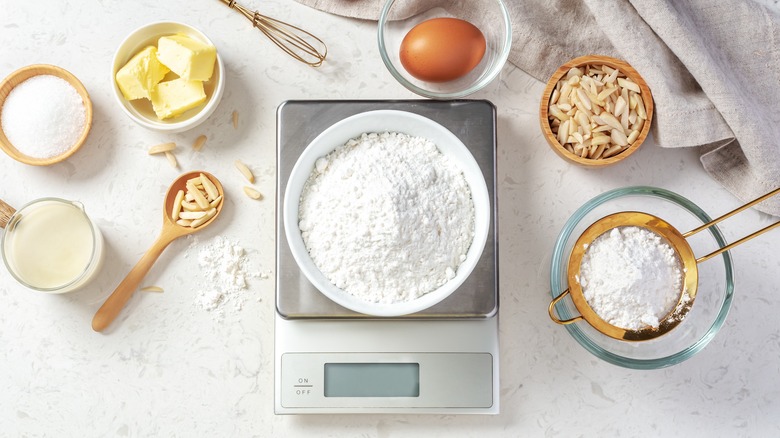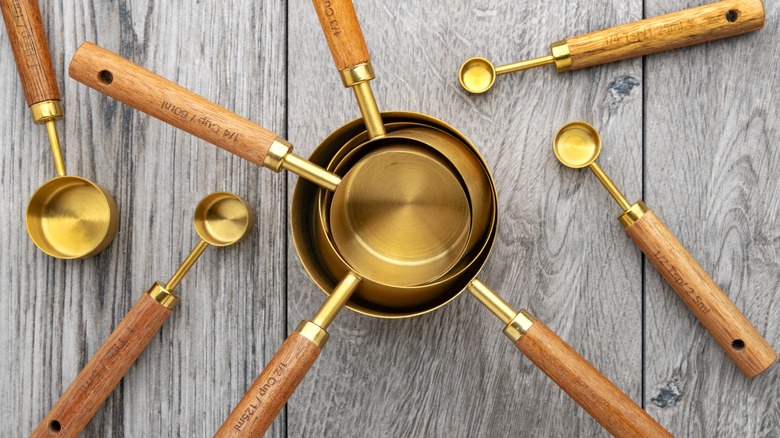Why It's A Huge Mistake To Measure Dry Ingredients In A Wet Measuring Cup
When you're baking cookies, cakes, pies, and other treats, you'll find recipes call for one cup of this or ¾ of a cup of that. Now, if you've already dirtied a liquid measuring cup, you might think you can just plop your dry ingredients in it to save yourself from doing a dish. Or, perhaps you weren't able to find your usual dry measuring cups and just need a way to make do.
Although this might seem like a genius workaround at first glance, it can actually be problematic. The reason for this is that while both utensils measure the volume of your ingredients, it's tricky to get an accurate measurement when you place your dry ingredients in a wet ingredient measuring cup. This is true whether you're measuring out cups or ounces.
When this happens, you can wind up adding too much or too little of your dry ingredients. This can affect the texture and taste of your baked goods, and when dealing with large quantities can make quite a difference.
How using liquid measuring cups will skew your dry ingredient quantities
Dry measuring cups are designed so that you can level them off, making sure you get exactly the amount of the ingredients you need. However, the liquid beaker has a deeper shape that allows you to fill it with varying quantities of what you're measuring. Because of the high walls of the beaker, you can't level off the ingredients in your measuring cups for accurate readings the same way. Worse yet, when you add dry ingredients to the beaker, they can tend to pile up in the middle, making it seem like you've poured in more than you did. With no way to flatten the top off, you can't tell if you've over or undershot.
Another issue with using wet measuring cups for dry ingredients comes into play if you're measuring your ingredients by weight. Although beakers often denote the number of ounces as well as cups, these are fluid ounces, which measure volume, as opposed to ounces, which measure weight. Instead, you'd need to use a kitchen scale for baking recipes that require ounces in order to get accurate amounts of your ingredients.
What about measuring wet ingredients in dry measuring cups?
Alright, so you know that you can't measure dry ingredients in a liquid measuring cup. But what about doing the reverse and weighing things like milk and water in dry measuring cups?
As it happens, this isn't a great idea either, although it's slightly more viable. Dry measuring cups, unlike beakers, don't have high walls to prevent wet ingredients from sloshing out. What that means is that when you move that ¼ cup of oil to the bowl, some of it can spill, leaving you with less oil than the recipe actually calls for.
Your safest bet is to stick with wet measuring cups for wet ingredients. Beakers, which are typically clear glass or plastic, allow you to make sure that the liquid is level with the lines on the cup. And, if you're measuring sticky ingredients that might leave residue in your beaker, rinse it with water or spritz it with oil before pouring them in to make sure you get accurate amounts when you add them to your recipes. So, when it comes to making great baked goods, sticking to the status quo with measuring methods is the way to go.


